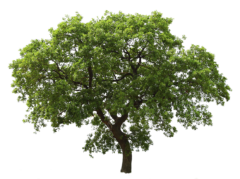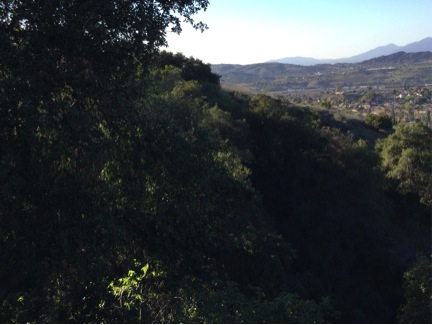Our blog was created in response to our unsettling experience at a city Planning Commission hearing involving our neighbor’s proposed remodel project which included removing an old growth, California Coast Live Oak tree, located in the rear of a ridge line .35 property, bordering riparian oak woodland, coastal sage scrub wildlife habitat. This “wildland urban interface” is a historic wildlife corridor, where animal movement is essential.
The applicant proposed the tree removal to allow for a view and an infinity swim pool; expressing no regard for the environmental impact on the oak woodland community, where our adjacent .63 parcel, along with over 19 other residential lots abutt and overlay.
The city planning commission exhibited no discretionary regard or action at the hearing, made no mention of the coast live oak in the Plan Report (even though it is a State protected tree species) and recommended the project to be categorically exempt from the California Environmental Quality Act. (January 27, 2016.)
Fortunately, after Public appeal, the project was tabled for redesign Oct. 2017. Eventually, the project was rejected entirely, for a complete re-submittal of a new project design. June 2018.
The tree threatened by development is a parent tree, governing a tree community, where natural propagation of many medium to smaller trees near and under its canopy occur. All trees in a woodland community create an essential plant alliance, which support over 1,000 living species: plants, fungus, insects, birds, mammals, reptiles.
Wildlife Corridor & Scenic Ridge Line
Wildlife and birds feed from, move through and take shelter in and under the trees. Additionally, the tree is a scenic focal point of the ridge line, beloved by neighbors, including our local Fire Station. This wildland urban interface, California native landscape is a threatened, dwindling wildlife pathway, home to endangered species: California Gnatcatcher, bats, Grasshopper Sparrow and white tailed Kite, woodpecker, blue jay, quail; along with deer, bobcat, coyote, rabbit and raccoon, naming only a few.
Suburban Wildlife Habitats
Our properties are part of a biodiverse, contiguous fragmented oak woodland, savannah, coastal sage scrub, chaparral, grassland which travels throughout a suburban housing tract, connecting Tres Hermanos Ranch to Steep Canyon, Diamond Bar Creek and Sycamore Park in the City of Diamond Bar. Our hills & valley are part of a wildlife corridor, linking north to Pomona Elephant Hill, Bonelli Park and south, to Puente Chino Hills Wildlife Corridor (the missing middle.) Our particular site is part of the San Dimas “quadrangle” where roughly 149 rare or endangered species have been mapped by the California Natural Diversity Database – a world class scientific library.
We hope to persuade city decision makers to become environmentally literate, change outdated ineffective tree codes, under-reported general plan data and to prioritize the remaining fragments of natural wildlife landscapes, on public and/or private properties, as a meaningful character trait of the city of Diamond Bar.
The canopy, understory and woodland of the aforementioned tree is pictured here; viewed from our patio. — 2017

